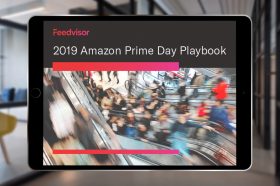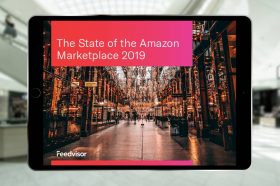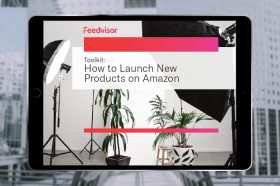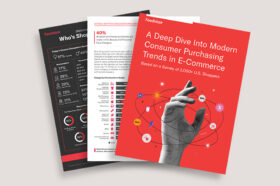Resources - Blog
How to Prepare for Prime Day 2019 [Webinar Recap]
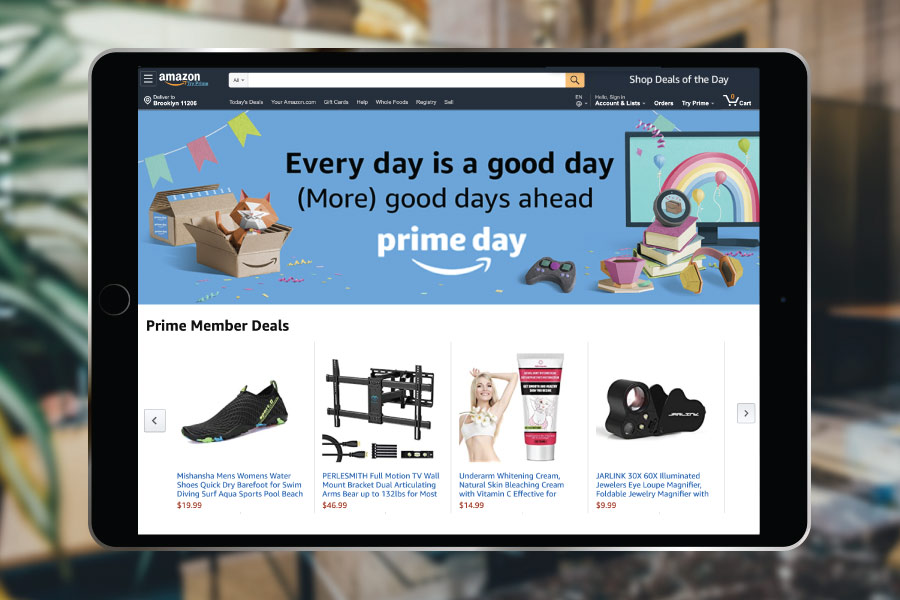
Stay on top of the latest e-commerce and marketplace trends.
Amazon’s Prime Day is undoubtedly one of the most significant shopping events of the year. More than 100 million products were purchased during Prime Day 2018, with small and medium-sized businesses (SMBs) that sell on Amazon raking in more than $1 billion in sales. This year, it is expected to be even bigger.
While Amazon has not yet announced the date for Prime Day 2019, it can be expected to take place in mid-July, as it has in previous years, likely over a 36-hour period or longer. With nearly half (48%) of current Prime members planning to make a purchase during the global shopping event this year, and 31% of consumers expecting to do the same, according to Feedvisor data, sellers and brands must proactively prepare a strategy to capitalize on the holiday-driven surge in search and sales volume, and ultimately ensure that this year’s Prime Day is both successful and profitable.
While the May 10 deadline to apply for Amazon’s coveted Lightning Deals promotion for Prime Day has already passed, it is certainly not too late to implement other strategies to capitalize on the momentous holiday. In this webinar led by fulfillment expert and e-commerce enthusiast Jenny Nguyen of Shipstation — a web-based shipping solution that streamlines the fulfillment process for online businesses — Nguyen reveals best practices, useful tools, and key strategies to streamline your shipping logistics and warehouse workflow to accommodate the anticipated high volume of orders.
Prioritize Prime Eligible Products
For a holiday designed specifically for Prime members, utilizing the proper fulfillment method for your business is key to capturing Amazon’s most loyal customer base. Indeed, 83% of Prime members said that free two-day shipping is the program’s most compelling benefit, and more than two-thirds said that Prime eligibility is a key factor they consider before purchasing a product on Amazon, according to Feedvisor data. As such, sellers ought to consider utilizing Prime-eligible fulfillment methods such as Fulfillment by Amazon (FBA) or Seller Fulfilled Prime (SFP), given consumers’ priority for Prime eligibility.
Nguyen recommends prioritizing a core set of products to list for Prime Day, perhaps four to five items, into your warehouse workflow to be prepared for processing and shipping those items in time to meet Amazon’s Prime requirements. However, this can be challenging during periods of high volume orders. To help alleviate the pressure, Nguyen recommends listing your core set of items at the top of your product list workflow, which will give warehouse managers a clearer view into your Prime Day orders. Through ShipStation, these products can be tagged and filtered to allow warehouse workers to view only Prime Day orders to help prioritize order processing.
Assign Automation Rules
To further keep track and manage your core set of Prime Day products, Nguyen suggests utilizing automation rules, which are available through most shipping platforms. Through these rules, you can assign Prime products to specific pickers and packers in your warehouse and avoid disturbing the rest of your workflow if you have additional orders coming in from other selling channels. If this is the case, your automation rule can be designed to prioritize Prime orders over those arriving from other marketplaces, which would typically have a larger processing timeframe compared to Amazon’s Prime requirements.
Automation rules can be utilized as a part of your regular process or they can be set up for a specific date range. However, Nguyen notes that if you are strictly setting up an automation rule for Prime Day, you should factor in additional time for the days leading up to and the days following Prime Day, as order volume tends to rise before and after the global shopping event.
Your automation rule can also provide alerts for new orders, whether it is for a single Prime order or for large orders, such as 50 products. These alerts will help keep your warehouse on top of every order and will prevent a bottleneck of workflow. Given the high volume of orders expected over Prime Day, it is important to also consider Amazon’s limit to just 30 API calls per hour — which was problematic for many merchants during Prime Day 2018, Nguyen says, as they were unable to get notifications to Amazon about their Prime orders until the following night, thus impacting the timeframe in which an order was shipped.
Batch processing is designed to prevent this. For example, should 50 orders of the same product arrive in a short timeframe, batch processing allows you to move all of these orders into a single batch and, therefore, requires just one call to Amazon to generate the shipping labels or fulfill the orders, which prevents throttling on the backend. By prioritizing a core set of products, utilizing automation rules to streamline your workflow, and taking proactive steps to preventing bottlenecks, you can optimize your leverage of the high-volume holiday.
Learn what Feedvisor can do for your business.
When you partner with Feedvisor, you automatically receive access to our true, AI-driven technology and hands-on team of e-commerce experts. Contact one of our team members today to learn more about our end-to-end solution for brands and large sellers on Amazon, Walmart, and e-marketplaces.

